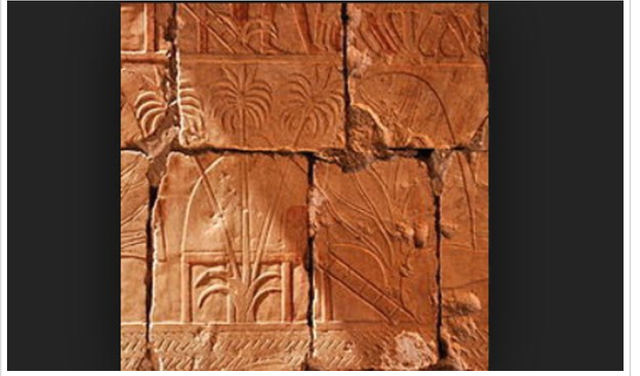The Mythical Land of Punt – Will ‘God’s Land’ Ever Be Found?
Ancient Egyptian records dating back thousands of years have spoken of the Land of Punt, a land of abundance which is believed to have prospered between 2450 BC and 1155 BC and where the Egyptians were able to obtain gold, aromatic resins, African blackwood, ebony, ivory, wild animals and even slaves. In the temple of Athribis, build under Ptolemaios XII, a relief apparently shows the various trees growing in Punt. Punt, so it seems, was a lush, tropical land, very different to the Egyptian desert. However, despite extensive depictions and accounts of this land of paradise, numerous searches and studies have failed to locate it leading some to even doubt its existence.
In the 12th Dynasty, Punt was immortalized in Egyptian literature in the very popular Tale of the Shipwrecked Sailor’ in which an Egyptian sailor converses with a great serpent who calls himself theLord of Punt’ and sends the sailor back to Egypt laden with gold, spices and precious animals:
Suddenly I heard a noise as of thunder, which I thought to be that of a wave of the sea. The trees shook, and the earth was moved. I uncovered my face, and I saw that a serpent drew near…[]…his body was as overlaid with gold, and his colour as that of true lazuli….[]… it was the prince of the land of Punt…Around 1477 BC, Queen Hatshepsut funded a mysterious overseas expedition to the Land of Punt, which is depicted in a relief at Deir el-Bahri (in modern day Luxor). It shows five ships, each measuring about 70 feet long, carrying 210 men and loaded with gold, trees and exotic animals, like leopards, apes and giraffes – all species found on the African continent. In the sea the relief show various species of fish: zoologist identified some of them living along the coast of Africa, but also along the Arabian Peninsula.
For over a century, archaeologists questioned the ability of Egypt to conduct such an oceanic voyage, with many believing that the Land of Punt was inland. However, evidence emerged in 2011 indicating that the ancient Egyptians weren’t just masters of the land…they were masters of the seas.
The evidence relates to a series of remarkable discoveries on a stretch of the Red Sea coast which proved that the Egyptian’s applied their masterful building skills to ships as well as pyramids.
Archaeologists excavating a dried-up lagoon, known as Mersa Gawasis, unearthed traces of an ancient harbour that once launched early voyages like Hatshepsut’s onto the open ocean. Inside a series of man-made caves they found timber, rigging, limestone anchors, steering oars, reed mats, cedar planks, and the remains of the oldest seagoing ships ever discovered, which offers hard proof of the Egyptians’ nautical roots and important clues to the location of Punt. “These new finds remove all doubt that you reach Punt by sea,” said Egyptologist John Baines. “The Egyptians must have had considerable seagoing experience.”The evidence suggests that that the Egyptians travelled to Punt by boat down the Nile, through the Wadi Tumilat in the eastern Delta and on to the Red Sea. There is evidence that the Egyptian crews would disassemble their boats, carry them overland, use them in the sea for trade, then carry them back overland to the Nile.
But geology gives us another clue to find the lost land of Punt. Along the gifts brought back from Punt were also living exotic animals, like baboons, as seen on the relief of Deir el-Bahari. In 2010, researchers analysed hair samples from 3,000 years old mummified baboons (the pet animals of important persons, like the family of the Pharaoh) found in the tombs of the Valley of the Kings. By comparing the results of the ancient hair samples with hair samples of modern animals living in Eritrea, Ethiopia, Somalia, Yemen, Uganda and Mozambique the researchers concluded that most similarity can be found with animals coming from eastern Ethiopia and Eritrea.
So could it be that the mystery has finally been solved? Well not quite yet. Much work is still to be done to find a precise location with supporting evidence. But one thing seems certain; the Land of Punt, which receded into legend and folklore after the 18 th Dynasty, is not a mythical place, but a real location that is still waiting to be uncovered.
